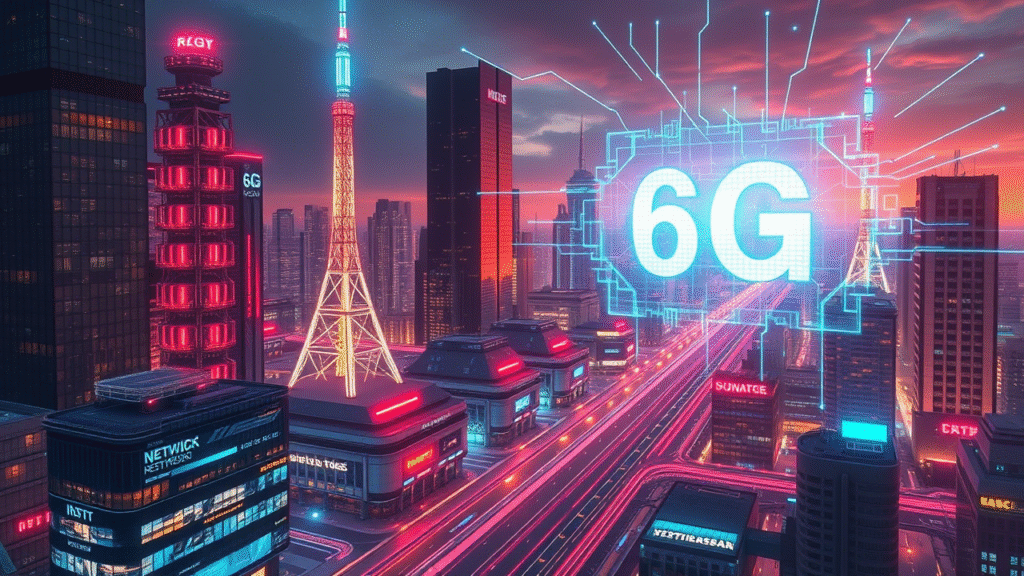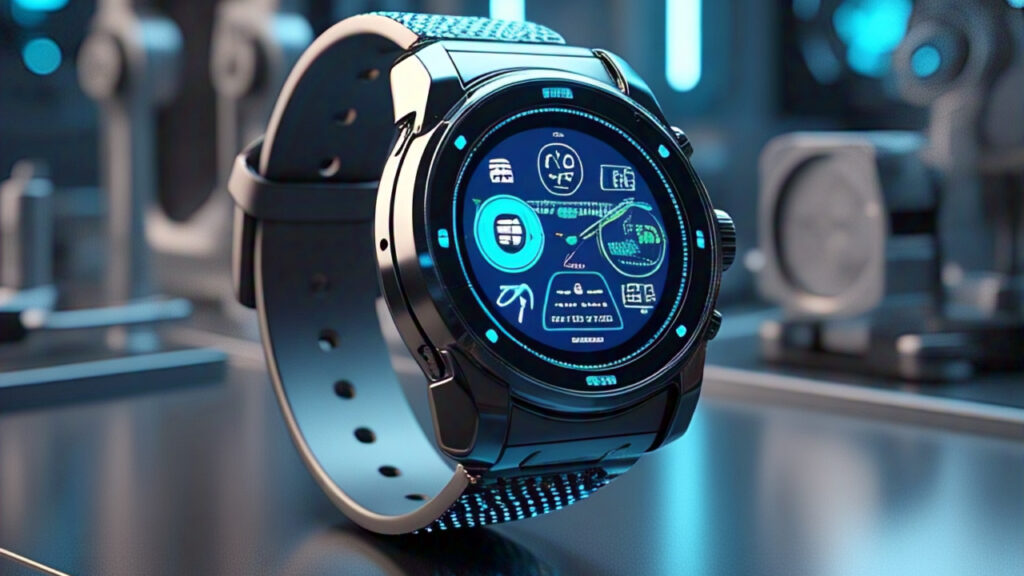Introduction: The Need for Speed (and Something More Profound)
We live in a world where a swipe, a tap, or a voice command can transport us into new realms. From streaming entire TV seasons in one sitting to monitoring our heartbeats in real-time, technology has transformed life as we know it. And at the heart of this transformation is something we rarely think about: wireless communication networks.
In recent years, 5G has taken the spotlight. Promised as the next evolution in mobile tech, 5G has delivered incredible speeds, reduced latency, and new possibilities. But even before 5G is fully rolled out in every country, the tech world is already setting its sights on the next frontier: 6G.
It’s more than just another G. 6G is not simply about increasing internet speeds—it’s about reshaping the way humans and machines connect, communicate, and coexist. It promises a level of connectivity so seamless, intelligent, and immersive that it could blur the boundaries between physical and digital reality.
So, why does it matter?
Because the very foundation of our digital future—autonomous transportation, remote surgery, holographic education, smart factories, AI-enhanced everything—will depend on it. And if we’re going to build that future, we need to understand what 6G brings to the table and the staggering potential it holds.
A Brief Look Back: From 1G to 5G in a Few Decades
Before we zoom forward into 6G, let’s rewind a bit and see how far we’ve come.
1G: The Analog Age (1980s)
The first generation of wireless networks brought voice calls without wires. Bulky phones, poor call quality, and zero data—just voice.
2G: The Digital Revolution (1990s)
Welcome to the digital era. 2G introduced SMS text messaging, encrypted calls, and better coverage. It was a major leap forward.
3G: Data Goes Mobile (Early 2000s)
With 3G came mobile internet. For the first time, users could browse the web, send emails, and access social media on the go.
4G LTE: The Streaming Era (2010s)
Now we’re talking. 4G made it possible to stream HD videos, play mobile games online, and enjoy fast browsing. It powered the app boom.
5G: Low Latency + Massive Speed (2020s)
5G isn’t just faster—it’s smarter. It offers 1–10 Gbps speeds, 1 ms latency, and can connect millions of IoT devices in real time.
What Is 6G? More Than Just “Faster 5G”
By the time 5G becomes fully mainstream, the groundwork for 6G will already be well underway. But what exactly is 6G?
At its core, 6G (sixth-generation wireless) is the next global wireless standard following 5G. However, unlike previous generations that focused on bandwidth and speed, 6G aims to revolutionize how networks interact with people, devices, machines, AI, and even the human brain.
Whereas 5G was designed to support the Internet of Things (IoT), 6G is being built for the Internet of Everything—a hyperconnected digital environment where machines, humans, environments, and systems are continuously exchanging data in real time.
We’re talking about:
- Terabit-per-second download speeds
- Latency as low as 0.1 milliseconds
- 3D holographic communication
- Digital twins of people, places, and systems
- Massively intelligent, self-optimizing networks
- Near-instant global coverage via satellite constellations
- Neural and bio-digital interfaces
It’s not just faster. It’s smarter, more immersive, and more transformational.
What Will 6G Enable That 5G Can’t?
6G won’t just give you a faster TikTok load time. It will bring radically new capabilities that redefine entire industries, experiences, and economies.
Here’s a glimpse into what 6G could make possible:
- Full Sensory Immersion
- Holographic Video Calls – Feel like you’re in the same room, not just watching a screen.
- Tactile Internet – Transmit touch, texture, and even temperature over networks.
- Virtual Travel – Experience sights, sounds, and even smells of remote places in real-time.
- Real-Time Digital Twins
- Mirror entire cities, factories, or your own body with a real-time digital replica.
- Engineers can simulate and manipulate environments from anywhere.
- Doctors can observe internal health metrics without invasive procedures.
- Brain-Computer Interfaces (BCIs)
- Connect your thoughts directly to machines using neural signals.
- Communicate without speaking.
- Control prosthetics, drones, or devices using only mental commands.
- Self-Evolving AI Networks
- AI won’t just run on 6G—it will run the network itself.
- Networks will predict demand, prevent outages, adapt coverage on the fly, and even understand user intent.
- Interplanetary Internet
- 6G will lay the groundwork for space-based communication networks, essential for connecting Earth to future Mars colonies, satellites, or deep-space probes.
Core Technologies Behind 6G
6G’s ambitious capabilities aren’t just hype—they’re rooted in powerful technological breakthroughs being developed right now.
Terahertz (THz) Frequencies
- 6G will use THz spectrum (0.1–10 THz) which enables enormous bandwidths.
- Challenge: THz signals are easily absorbed by the atmosphere and need line-of-sight transmission or special beam-forming tech.
AI-Native Infrastructure
- AI won’t just be a user feature—it will be embedded into the network’s core.
- Self-healing networks, predictive maintenance, energy optimization, and traffic control will all be AI-driven.
Edge Intelligence and Distributed Computing
- Computing power will shift to the “edge”—closer to users and devices.
- This enables ultra-fast processing, lower latency, and localized AI.
Quantum Communication
- Ultra-secure data exchange using quantum cryptography.
- Enables unhackable transmission of sensitive information.
Intelligent Reflecting Surfaces (IRS)
- Smart surfaces that manipulate signals to improve coverage and reduce interference.
- Turns walls, buildings, and roads into part of the network infrastructure.
What Makes 6G So Different from 5G?
| Feature | 5G | 6G |
| Max Speed | ~10 Gbps | ~1 Tbps |
| Latency | ~1 ms | ~0.1 ms |
| Frequency Range | <100 GHz | 100 GHz – 10 THz (Terahertz) |
| Coverage | Urban + Suburban | Global (Land + Sea + Space) |
| AI Integration | Partial (for optimization) | Native AI built into network |
| Key Applications | Smart cities, IoT, remote ops | Digital twins, BCIs, holo-worlds |
| Device Density | 1 million/km² | 10 million/km² |
| Security | Encryption-based | Quantum + AI-secured |
How 6G Will Transform Key Industries
The arrival of 6G won’t just be a milestone for telecom. It will fundamentally rewire the core industries that keep modern society functioning. From precision healthcare to immersive education and autonomous transportation, 6G will serve as the digital nervous system connecting it all.
Let’s explore how 6G will disrupt, elevate, and redefine key sectors.
Healthcare: From Telemedicine to Bio-Digital Symbiosis
5G already made remote surgery and telemedicine viable. But 6G? It will transcend limitations and enable a new form of healthcare:
Digital Twins of the Human Body
- Doctors will use real-time digital avatars of patients for diagnostics, monitoring, and training.
- These avatars will respond to stimuli, simulate disease progression, and display internal organ states in real time.
- Enabled by AI + sensors + THz-speed data transmission.
Remote Surgery 2.0
- Latency reduced to less than 1 ms means remote robotic surgeries can feel immediate and precise, even across continents.
- Surgeons in New York operating on patients in Nairobi with haptic gloves and real-time visual-tactile feedback? Yes, please.
Neural Health and Brain Interfaces
- 6G will support brain-computer interface (BCI) bandwidth, making it possible to detect, predict, and treat mental health conditions or neural disorders in real time.
- Thought-based commands could control prosthetics, wheelchairs, or medical devices with zero delay.
Always-On Medical Monitoring
- Wearable and implantable sensors transmitting live vitals 24/7 with negligible power consumption.
- AI continuously analyzes this data and sends alerts for early intervention.
Education: Immersive, Personalized, and Global
Education will no longer be constrained by time, space, or bandwidth.
Holographic Classrooms
- Imagine learning physics with a holographic Einstein, or walking through a 3D model of the Colosseum during history class.
- Students from across the globe can meet, learn, and collaborate in ultra-realistic virtual classrooms.
Personalized AI Tutors
- Your 6G-connected learning assistant will understand your learning style, weaknesses, and preferences.
- It will adapt curriculum in real time based on engagement and comprehension.
Remote Labs and Experiments
- Students can perform virtual dissections, chemical reactions, or physics experiments with real-time feedback and sensory interaction—no physical lab required.
Education for All
- With global 6G coverage, even students in remote villages will gain access to elite educators and immersive experiences, democratizing education worldwide.
Transportation: Autonomous Everything
In the world of 6G, autonomous vehicles won’t just be possible—they’ll be unavoidable.
Vehicle-to-Everything (V2X) at Scale
- Vehicles will communicate with other vehicles (V2V), infrastructure (V2I), pedestrians (V2P), and even the cloud (V2C) simultaneously.
- This interconnectedness will reduce accidents, optimize traffic flow, and make human driving feel obsolete.
Real-Time Decision Making
- With sub-millisecond latency and ultra-fast processing, vehicles will process thousands of inputs per second and respond faster than human reflexes.
Airborne Mobility
- 6G’s edge computing and low latency can support autonomous drones, air taxis, and smart logistics.
- Urban air mobility will shift from concept to commercial reality.
Entertainment & Media: Living Inside the Experience
5G brought cloud gaming and 4K streaming. 6G will take you inside the movie, game, or song.
Holo-Cinema and Spatial Entertainment
- Watch movies in your living room with 3D characters walking around you.
- Experience concerts from your home with volumetric audio and photorealistic holograms of performers.
Real-Time AR/VR Worlds
- No motion sickness. No lag.
- Full-body VR suits will transmit touch, heat, and pressure, creating near-perfect immersion.
AI-Generated, Audience-Specific Content
- Entertainment tailored in real time based on user emotion, reaction, and engagement—tracked via biosensors and processed through AI.
Industry and Manufacturing: The 6G Smart Factory
Industry 5.0: Human-AI Co-Creation
- While Industry 4.0 was about automation, Industry 5.0 focuses on synergy between humans and intelligent machines.
6G will enable robots and humans to work in real time with zero latency and perfect sync.
Real-Time Supply Chain Visibility
- Every item tracked, monitored, and adjusted live through digital twins.
- React to demand shifts or disruptions instantly, minimizing waste and maximizing efficiency.
Intelligent Maintenance
- Machines will predict and resolve their own issues before failure occurs, thanks to real-time diagnostics and AI-powered alerts.
Military & Defense: Supremacy Through Connectivity
6G isn’t just a civilian upgrade. It’s a national security asset.
Hypersonic Coordination
- Hypersonic missiles and aircraft require instantaneous, adaptive communication networks—something 6G is designed to support.
Cognitive Warfare and AI Command
- AI-powered strategy assistants processing millions of variables in real time.
- Command decisions that used to take minutes could be made in fractions of a second.
Global Reconnaissance
- 6G-connected drones, satellites, and sensors feeding live multi-modal data to control centers anywhere in the world.
Agriculture: The Rise of Precision Farming 2.0
Drone-Enabled Hyper-Monitoring
- 6G-powered drones can monitor soil quality, pest infestation, crop health, and weather conditions continuously.
Smart Irrigation and Yield Optimization
- AI models optimize water use, fertilizer spread, and harvest timing based on real-time environmental inputs.
Remote Equipment Control
- Farmers can operate tractors, harvesters, and drones remotely, even across countries.
Retail: Enter the Experience Economy
Holographic Try-Ons
- Use 3D avatars to try on clothes, glasses, or makeup from home with near-perfect fit simulations.
Smart Stores
- In-store sensors track movement and engagement, allowing AI to instantly change promotions or layouts for increased conversions.
Emotion-Based Advertising
- Ads could adjust in real time based on your mood or expressions, creating hyper-personalized experiences.
The Global Race to 6G: Who’s Leading the Charge?
6G isn’t just a tech upgrade—it’s a new battleground for global dominance.
China
- Launched a 6G test satellite in 2020.
- Plans to lead standardization and dominate hardware infrastructure, similar to its approach with Huawei in 5G.
United States
- Through Next G Alliance (ATIS), the U.Spromises to stake its claim on 6G innovation and IP
- Investments from Qualcomm, Apple, Intel, and government agencies like DARPA are ramping up.
Europe
- The Hexa-X program, led by Nokia and Ericsson, focuses on sustainability, trust, and digital inclusion.
Legal & Ethical Governance of 6G: EU wants data sovereignty and ethically led 6GSouth Korea & Japan
- South Korea has pledged billions in 6G R&D, aiming to begin rollout by 2028.
- Japan’s NTT and Sony are exploring 6G-enabled spatial computing and entertainment.
When Will 6G Arrive?
We’re not there yet—but here’s the likely timeline:
| Year | Milestone |
| 2023–2025 | R&D, early standardization, academic trials |
| 2026–2027 | National prototypes, small-scale testbeds |
| 2028–2029 | Initial standards finalized (ITU/3GPP) |
| 2030 | Commercial rollout begins in advanced economies |
| 2031–2035 | Global adoption accelerates |



